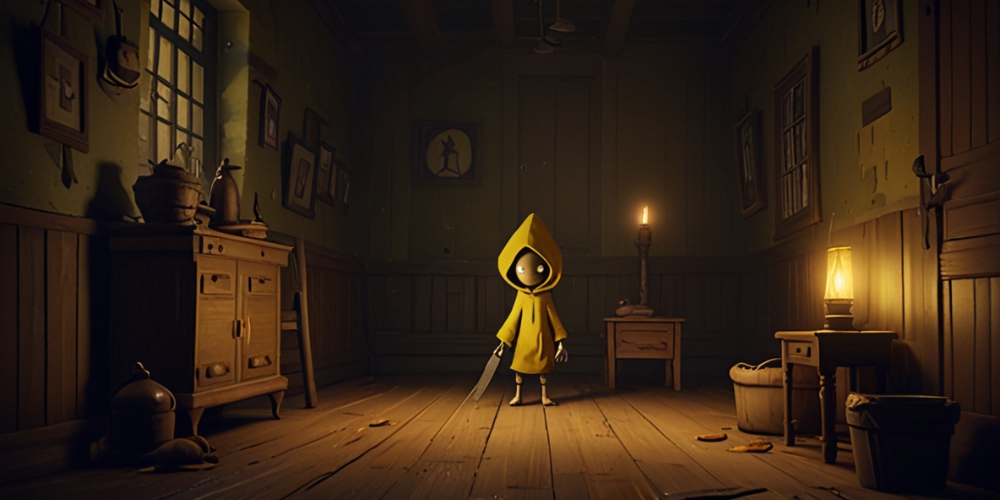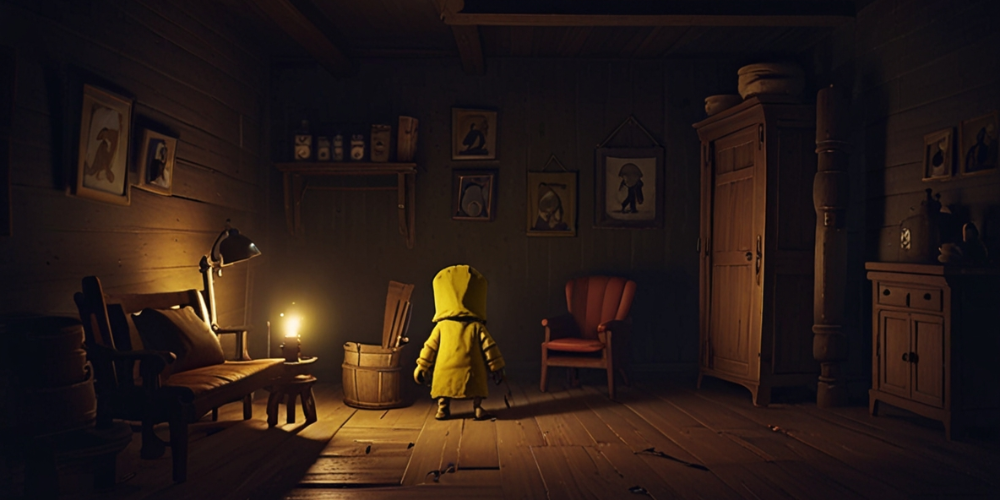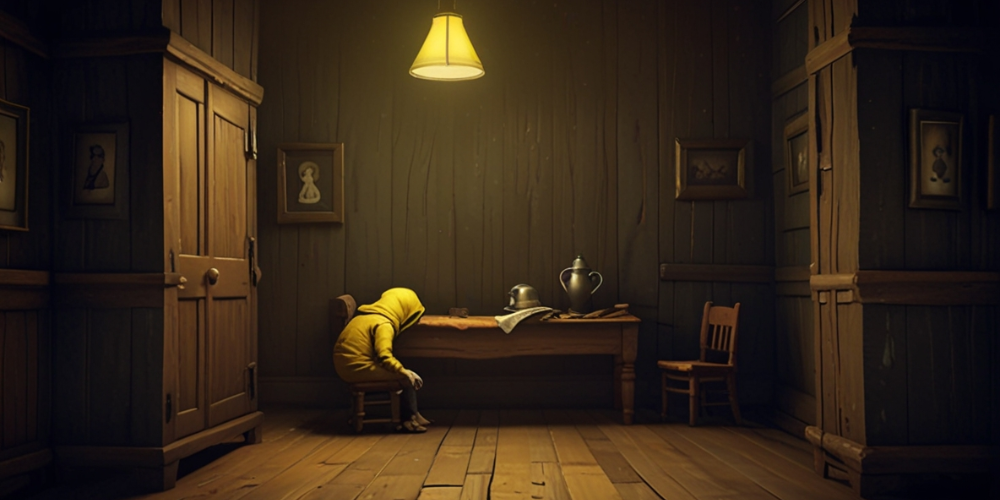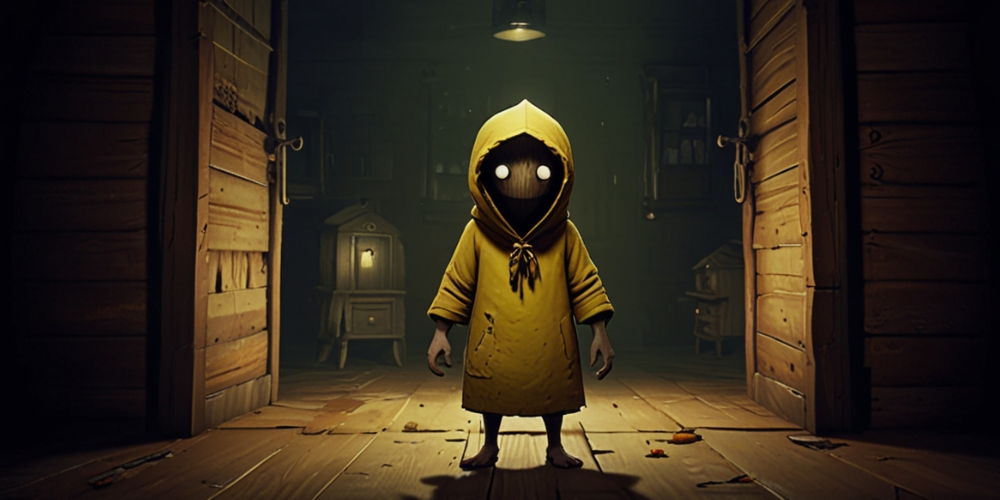
As I immersed myself into the haunting universe of Little Nightmares, I quickly found myself enthralled by more than just the eerie visuals. The relentless tension that permeated each level was a crafted language of its own. Little Nightmares captured my imagination, weaving horror elements with profound themes that resonate on multiple levels. Each dark corner of this game held a lesson masked in fear, and I felt compelled to explore it all.
The Childlike Perspective of Fear
The first thing that struck me was the protagonist, Six—a small, vulnerable child navigating a terrifying world. The game ingeniously employs the perspective of childhood innocence to amplify the sense of fear. As I guided Six through the perilous environments, I couldn’t shake the feeling of wanting to protect her. The horrors I encountered were magnified by this innocent lens, transforming mundane elements of a child’s world into something grotesque and threatening.
The Monstrous Reflection of Society
I couldn’t help but notice how the grotesque monsters symbolized various societal issues. The towering figure of the Janitor, with his elongated arms and faceless visage, felt like a representation of the unseen forces that control and dictate our lives. Each encounter with him became a commentary on authority and its oppressive nature. He stalked me not just as an enemy, but as a haunting reflection of the systems designed to suppress the vulnerable.

The Use of Darkness
One of the most chilling aspects of Little Nightmares is its heavy reliance on darkness. The environments enveloped me in shadow, crafting an atmosphere filled with anticipation and dread. The darkness was not just a visual element; it served as a powerful metaphor for the unknown, playing on primal fears that resonate with us all. Each step into the blackened spaces felt like a plunge into uncertainty, forcing me to confront my deepest anxieties.
Quiet Moments of Terror
The game beautifully juxtaposes moments of quiet with sudden bursts of chaos. I experienced stretches of solitary exploration where the silence would wrap around me like a shroud—an illusion of safety. Yet, it was in these very moments that the tension built, waiting to unleash something horrifying. These pacing choices reflected a profound truth about fear itself; it often lurks just beneath the surface during stillness, ready to pounce when we least expect it.
Emotional Resonance through Isolation
Isolation is another theme deeply woven into the fabric of Little Nightmares. As I traversed the lone corridors and vast, empty spaces, I felt a palpable sense of loneliness. The feeling was almost suffocating. This sense of solitude augmented the experiences I faced, echoing the emotional detachment many endure in the real world. Through Six’s journey, I felt a connection to the universal experience of grappling with isolation and the desires for companionship and understanding.

The Symbolism of the Maw
The Maw itself is a character—a grotesque manifestation of consumption and greed that resonates throughout the gameplay. As I ventured deeper into its depths, I was struck by how the various environments represented excess and the darkness that follows. Each segment of the Maw revealed the psychological repercussions of insatiable appetites, urging me to reflect on the consequences of overindulgence within society.
Overcoming Adversity through Strategy
I discovered that Little Nightmares doesn’t just present its horror passively; it challenges players to engage with it. The game requires strategic movement and timing to evade monstrous threats. This emphasis on survival echoed the theme of resilience in the face of adversity. Every escape was not only a victory in terms of gameplay, but also imparted a profound lesson about facing life's obstacles and the inner strength needed to conquer them.
The Role of Sound Design
The auditory experience in Little Nightmares was another layer that intensified the overall horror. Every creaking floorboard and distant whisper served to build tension and connote danger. The chilling sounds heightened my awareness of my surroundings, making me question my choices. This interaction reminded me of how sound can evoke emotional responses, deepening the themes of dread and anxiety present in the visual narrative.

Trapped in a Cycle of Despair
As I delved further into the game, I noted how characters seemed perpetually trapped in their roles—mere puppets of the Maw, unaware of their horrific existence. I became acutely aware of how Little Nightmares comments on the cyclical nature of despair. Each monster was not just a foe but represented an ongoing struggle that many face in life. This portrayal served to highlight the difficulties surrounding the quest for freedom and redemption.
Fragmented Memories and Trauma
The fragmented storytelling in Little Nightmares resonated deeply with me. As I pieced together snippets of Six’s past and her encounters with the grotesque denizens of the Maw, I realized that each fragment represented a certain kind of trauma. The use of horror to convey these experiences allowed me to understand how individuals navigate their own haunted memories, revealing a complex interplay between fear and recollection.
Visual Metaphors of Control
The visual design of Little Nightmares plays a pivotal role in conveying its themes. The enormous, towering figures contrasted dramatically with Six’s diminutive stature, illustrating the underlying theme of control versus vulnerability. This imbalance sparked a realization about power dynamics in relationships—how those with authority often overshadow the weak. The game’s aesthetic choices powerfully emphasized this struggle.
Confronting the Abusive Figures
As I faced the various denizens of the Maw, I couldn’t help but notice how they drew parallels to abusive figures in society. The horror that I encountered was not just fantastical; it sparked reflections on real-life experiences of manipulation, fear, and oppression. Each confrontation with these monstrous beings was a layered commentary on the need to confront toxic relationships and societal structures that diminish the essence of individuality.

The Burden of Innocence
Little Nightmares poignantly captures the burden of innocence lost. As I navigated through the grim environments, it became clear that Six’s journey illustrated the gradual loss of innocence through harrowing experiences. This theme emanated an almost palpable sorrow, encapsulating how the harsh realities of life often strip away our childlike wonder, leaving behind only the chilling echoes of what once was.
Imagery of Escapism
Finally, the imagery in Little Nightmares serves as a dual representation of escapism—both in the tangible sense of avoiding monstrous threats and in the emotional realm of evasion from one’s realities. Each level I cleared was both a physical triumph over horror and a psychological escape from confronting my own fears. The game masterfully illustrates how escapism can trap us in a cycle, prompting reflection on the balance between facing fears and evading them.
Navigating Through a Liminal Space
Each twist and turn through the realms of Little Nightmares feels like a passage through a liminal space—a threshold between reality and nightmare. I found myself in this surreal world where the familiar becomes unfathomably strange. This journey through disjointed realities evokes the unsettling feeling of being caught between dreams and wakefulness, a powerful parallel to exploring one’s subconscious fears and thoughts.